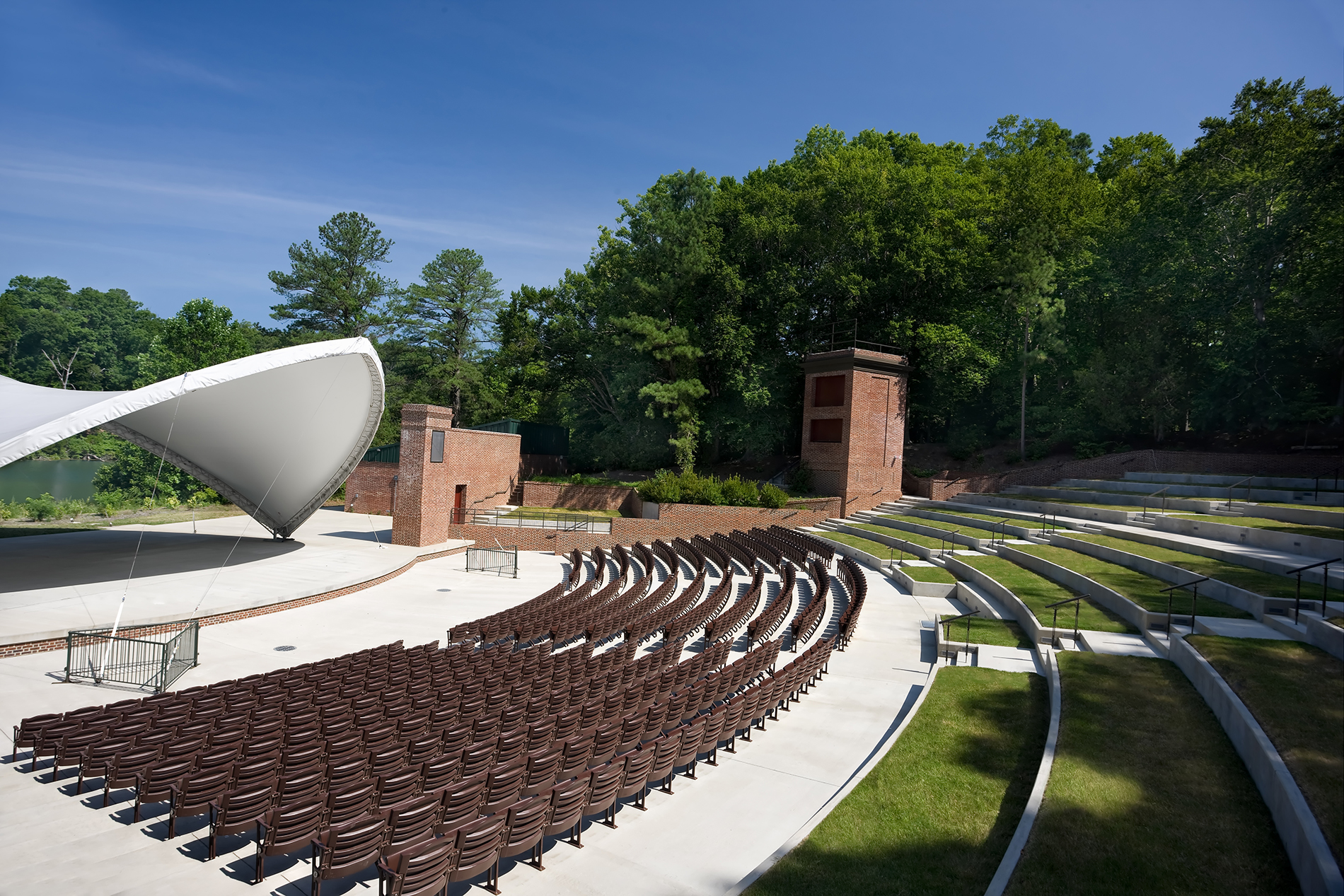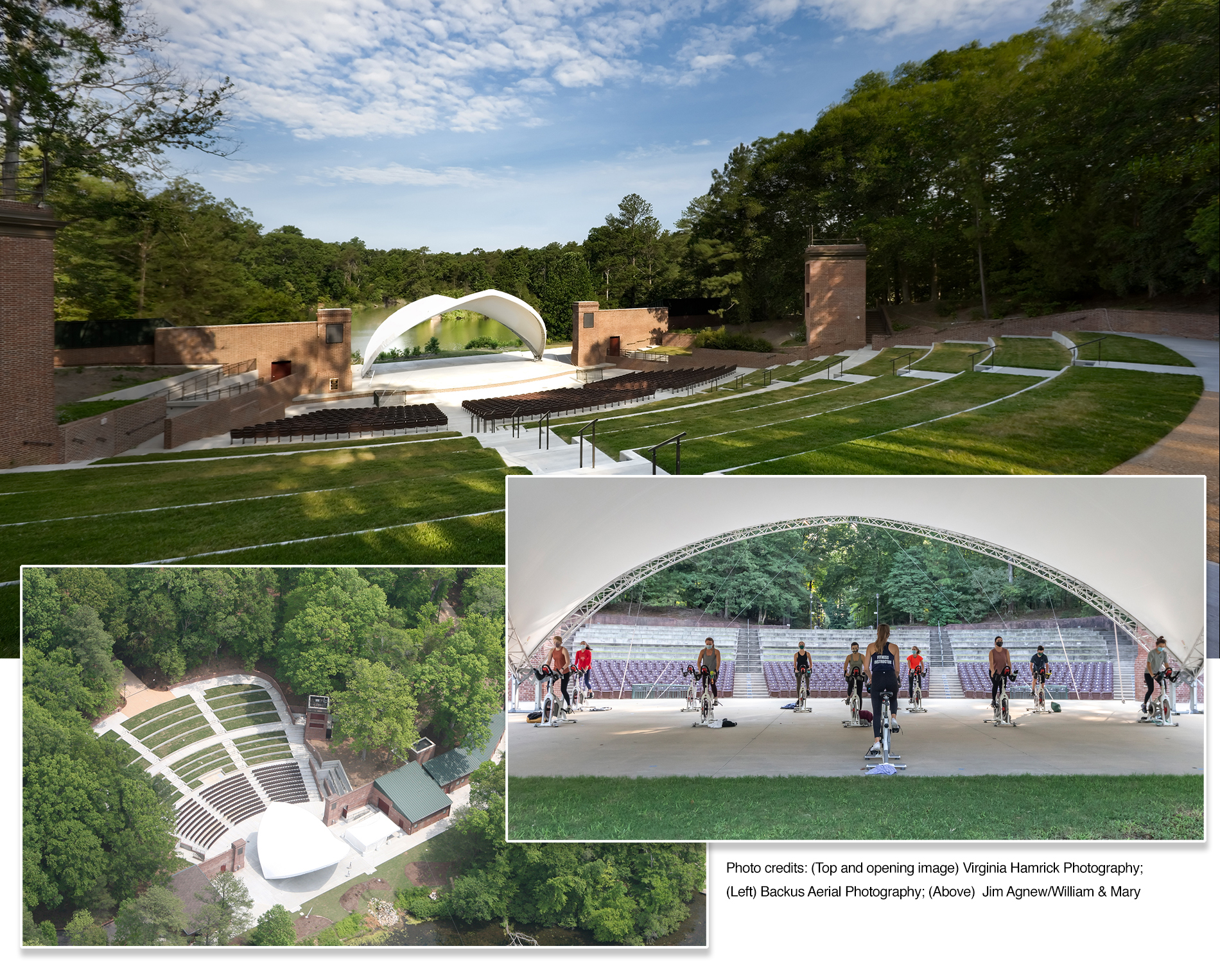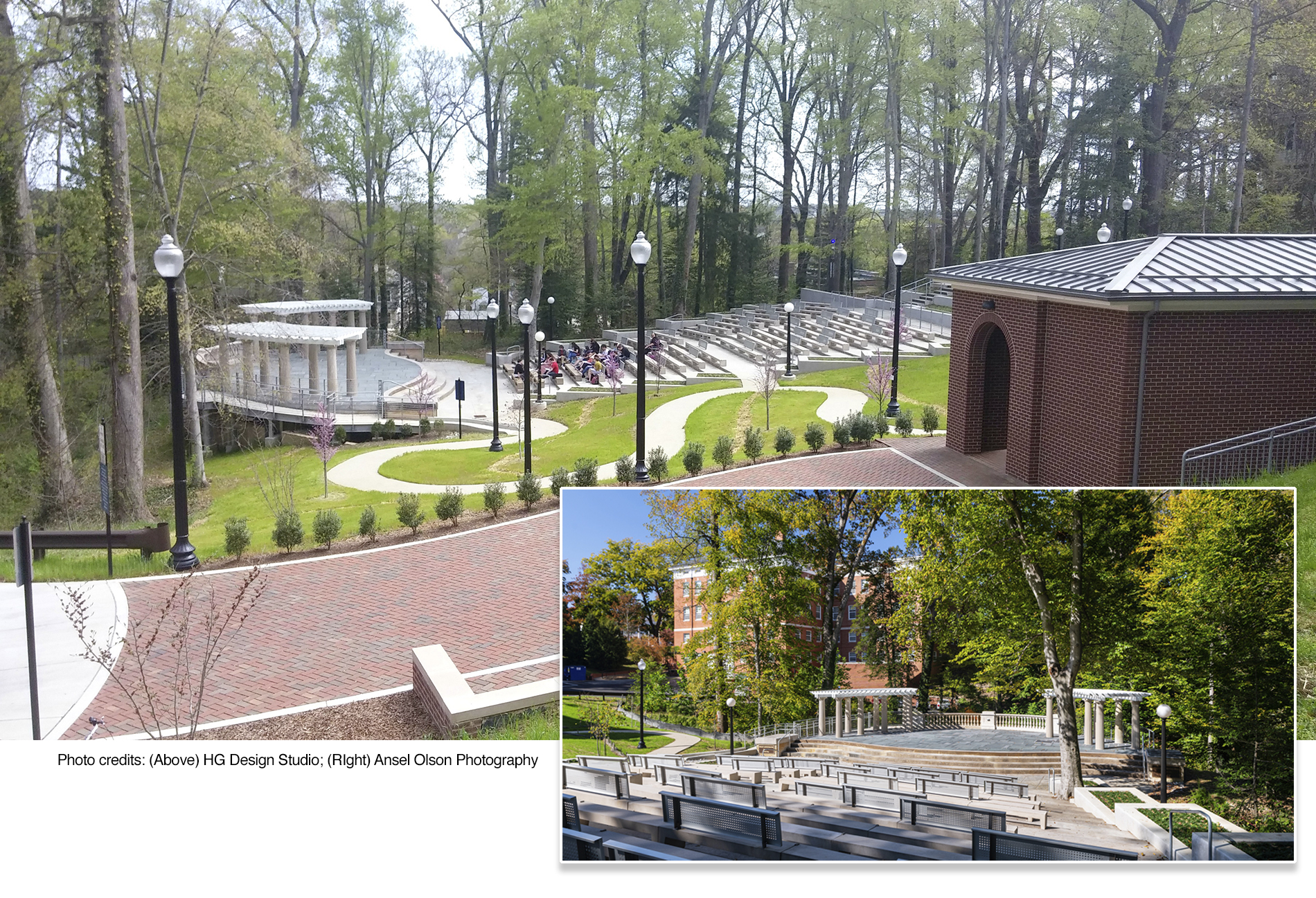
Consequences and changes resulting from the COVID-19 global pandemic are far-reaching. Colleges, universities, and schools have certainly felt the pandemic’s effects across offices and functions. The manner in which students learn and live on campus was thrown into instantaneous disarray last spring. Since early 2020, campus facilities professionals have undertaken a Herculean task to transform facilities and campus plans to meet our new reality. Yet these times of uncertainty and upheaval provide opportunities to reevaluate and reimagine campus spaces.
It’s been more than a year since the pandemic disrupted campus life, and hope of moving past the pandemic is on the horizon with the success of vaccination efforts. Now is an ideal time for educational facilities professionals at all levels to evaluate how campus spaces have evolved and what changes are likely to be permanent.
One area that would be wise for facilities professionals to carefully consider is the role of outdoor spaces on their campuses. Schools should prioritize and repurpose outdoor spaces to be multifunctional and encourage even more usage.
Why Outdoor Spaces Matter
For decades, many colleges and universities focused significant attention on interior aspects of facilities and new technological tools that support student, faculty, and staff members. Although outdoor spaces weren’t ignored and a great many schools have a variety of passive (i.e., open greens, commons, lawns) and activated (i.e., amphitheater) outdoor facilities, these spaces weren’t prioritized.
For colleges and universities that want to remain competitive, a more serious focus on and investment in outdoor spaces is vital.
The pandemic highlighted the importance that outdoor spaces can and should have in campus communities. They moved up on priority lists as schools began utilizing these spaces for a variety of needs, including classrooms, student gatherings, fitness programs, and more.
The trend toward more outdoor spaces and renovating existing outdoor facilities to serve a greater number of functions is a good sign. For colleges and universities that want to remain competitive, a more serious focus on and investment in outdoor spaces is vital.
Health and Wellness Benefits
There are many benefits to outdoor spaces on campus. Perhaps the most obvious advantage is connected to health and wellness. An increasing body of scientific research demonstrates that exposure to nature and being outdoors for even a few minutes a day will elevate a person’s well-being and happiness. A Harvard Medical School report analyzing research on this topic found a clear and strong connection between time spent outdoors and a reduction in anxiety, stress, and depression. Additionally, a 2019 Time magazine story reported on new research indicating that spending time outdoors, especially in green spaces, is among the quickest ways to improve health and mood.
Add to this established science the dramatic drop in risk of exposure and infection to COVID-19 when outdoors as compared to the risk when in interior spaces, and it’s no surprise we’re seeing a renewed focus on exterior environments.
Investing in existing outdoor spaces and creating new spaces fits nicely with the heightened focus on student health and wellness. Students—as well as faculty and staff—are putting more emphasis on wellness. Outdoor spaces used for class, student activities, or social gatherings should be a key component of any institution’s facilities strategy.
Economic and Sustainability Benefits
In addition to the wellness benefits that outdoor spaces provide, they also make economic sense and are more sustainable than most types of campus facilities. From the economic perspective, renovating or adding an amphitheater or outdoor classroom is less expensive than renovating or constructing a new indoor facility.
Sustainability is another important factor in prioritizing outdoor spaces. These spaces are more likely to conserve existing natural settings and have a much smaller carbon footprint than is required for renovating or constructing a new building. Furthermore, they can be designed as demonstrations of sustainability through incorporating design features such as rain gardens. Ensuring a sustainable environment is one of many reasons for including both architects and landscape architects in the design of any outdoor spaces.
Facilities management professionals shouldn’t view outdoor spaces as secondary considerations on a campus either. When there’s a need and demand to renovate existing facilities, consider ways to incorporate outdoor components in those projects.
The College of William & Mary in Williamsburg, Virginia, offers an illustrative example of how to effectively include outdoor spaces in renovation projects and ensure those spaces serve many purposes. The school conducted a feasibility study to expand its Alumni House and determined that as part of that expansion, outdoor gardens and terraces should be incorporated into the design. Outdoor gardens created the opportunity for green spaces that facilitated intimate gatherings, while the terraces could be utilized for larger or socially distanced events. These additions brought more outdoor and green spaces to the school’s historic campus and have become incredibly popular. Similarly, the college renovated its famed Lake Matoaka Amphitheater to serve a variety of campus and community functions. The amphitheater now hosts performances, student gatherings, and even wellness activities, such as yoga and spin classes.

College of William & Mary spin class at Lake Matoaka Amphitheater.
Multifunctional Approach
To maximize the benefits of outdoor spaces, colleges and universities should ensure they are multifunctional. As the demand for more outdoor space on campus rises, flexible design is crucial. Usage could range from yoga class early in the morning to a classroom setting during the day, to a student-led performance at night. It’s also likely that students and faculty will find other ways to utilize a space that may be unexpected or surprising. The key in both design and maintenance is flexibility.
The historic Amphitheatre at the University of Mary Washington in Fredericksburg, Virginia, highlights how an outdoor space can meet a variety of demands.

Amphitheater at the University of Mary Washington.
The school repaired and updated the amphitheater, a long-cherished campus space that dates from 1923, to retain its attraction as a quiet wooded campus park while it continues to serve as a flexible outdoor facility. Among the considerations during the renovation was respecting the historic nature of the amphitheater, the inclusion of barrier-free access paths, seating, and newly constructed restroom facilities. Like other types of facilities, accessibility can’t be overlooked for outdoor spaces.
During the past year, the amphitheater has served as the unofficial location for many classes and group meetings that have moved outside. Its consistent use highlights the demand for these exterior environments.
Outdoor spaces served a critical function over the past year and are poised to remain pivotal parts of a successful campus plan. Now, more than ever, colleges and universities should invest in renovating or developing new outdoor spaces that can serve academic and student life needs for years to come.
Lori Garrett, FAIA, is a senior principal at Glavé & Holmes Architecture in Richmond, VA. As director of the firm’s Higher Education Studio, Garrett oversees the design direction of higher education projects for colleges and universities throughout the Mid-Atlantic and Southeast. She can be contacted at [email protected].
Facility Asset Management
Covers the issues and challenges surrounding the management of a facilities department, including solutions for benchmarking performance measures, database and reporting systems, and professional and educational trends in facilities management. To contribute, contact Lindsay Wagner, field editor of this column.
See all Facility Asset Management.


